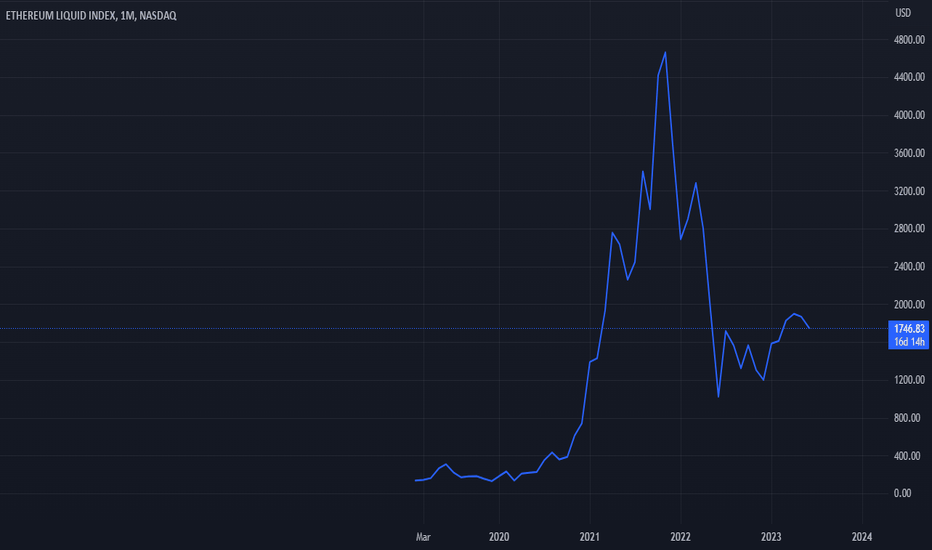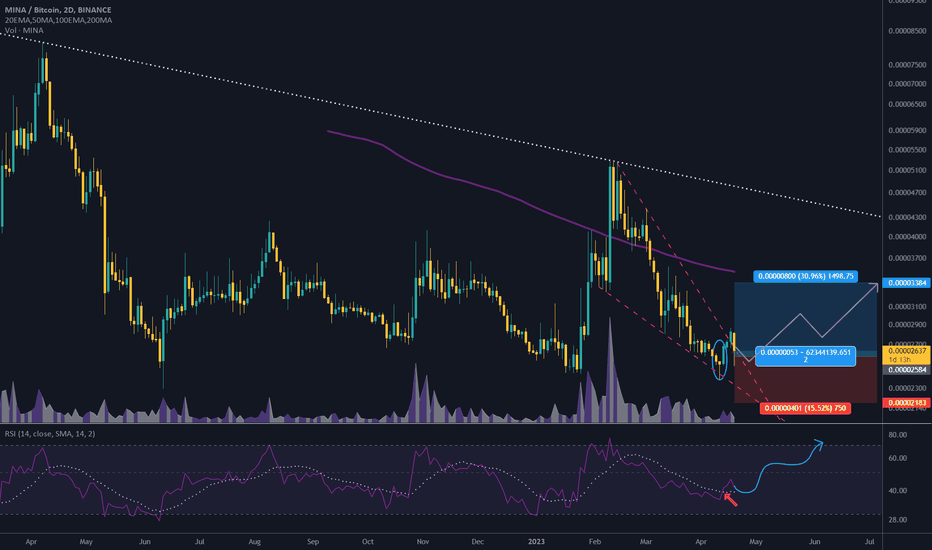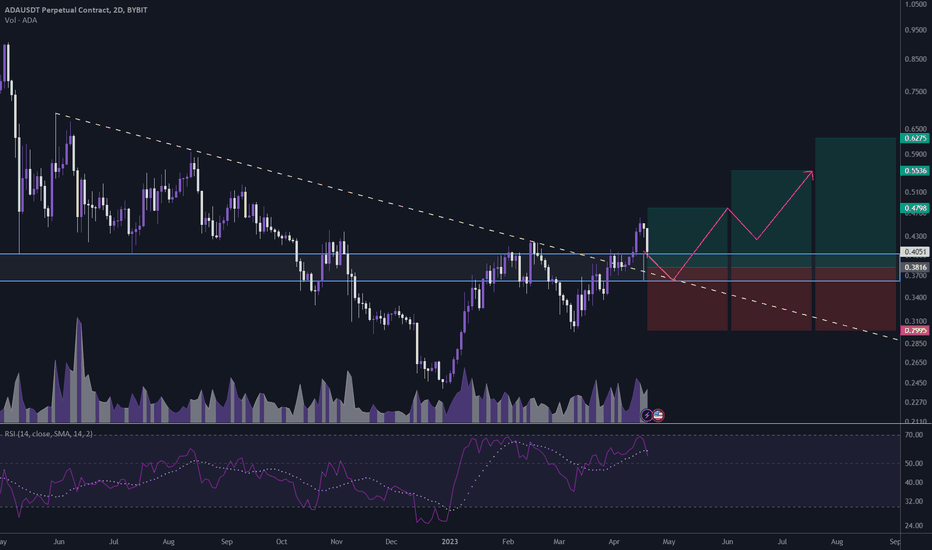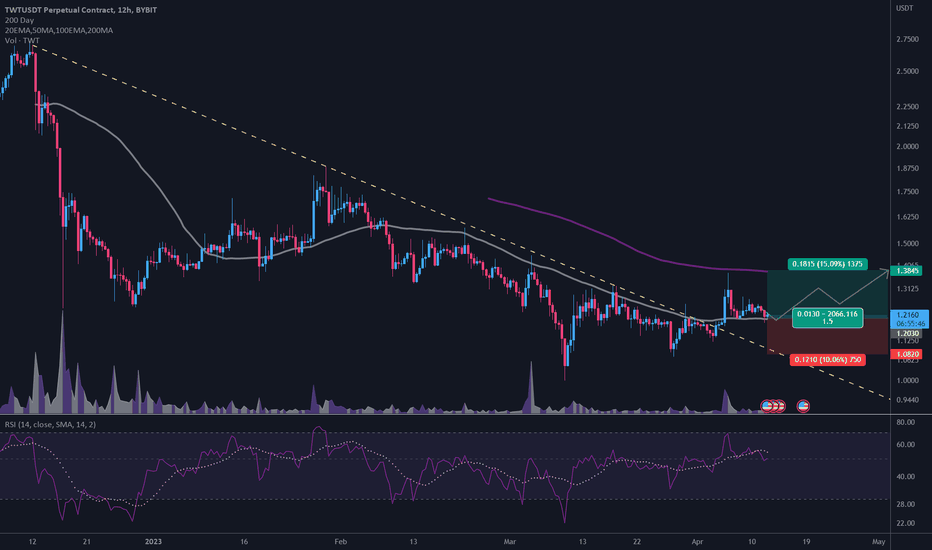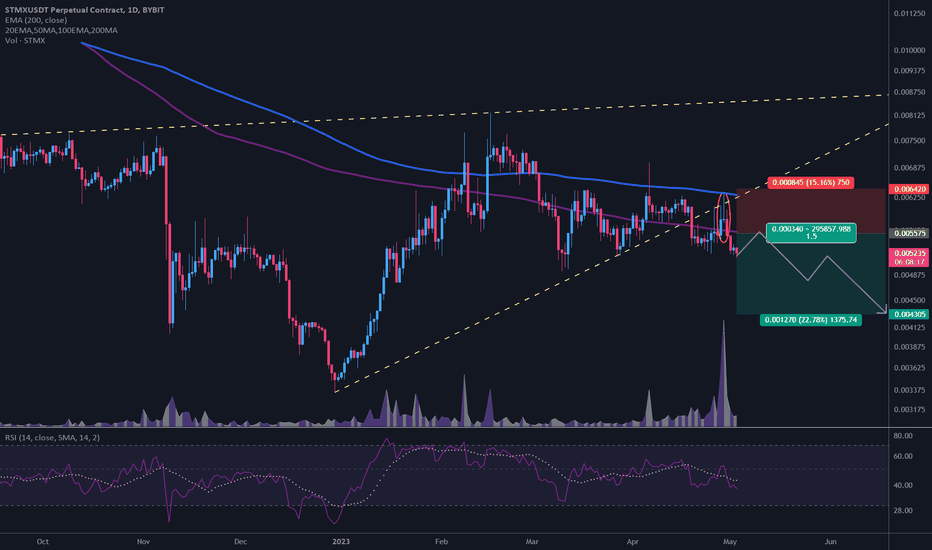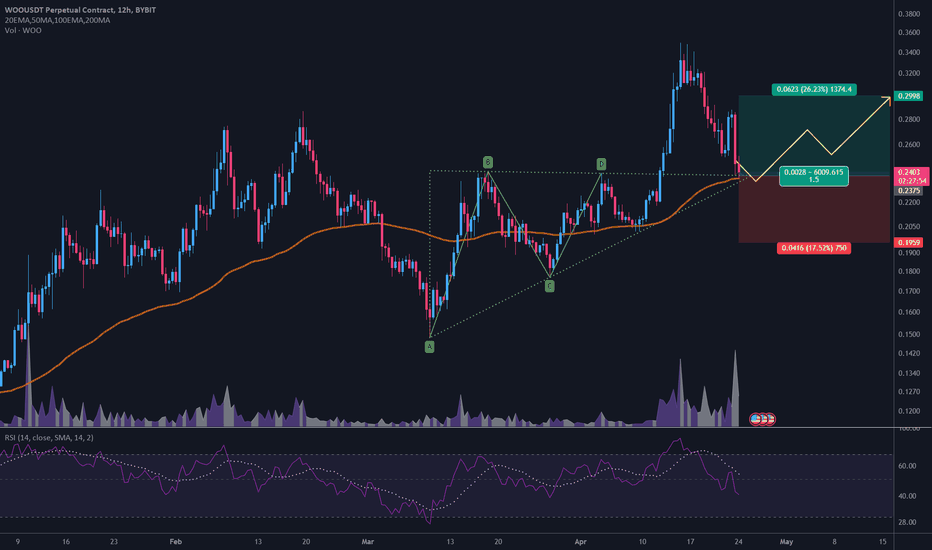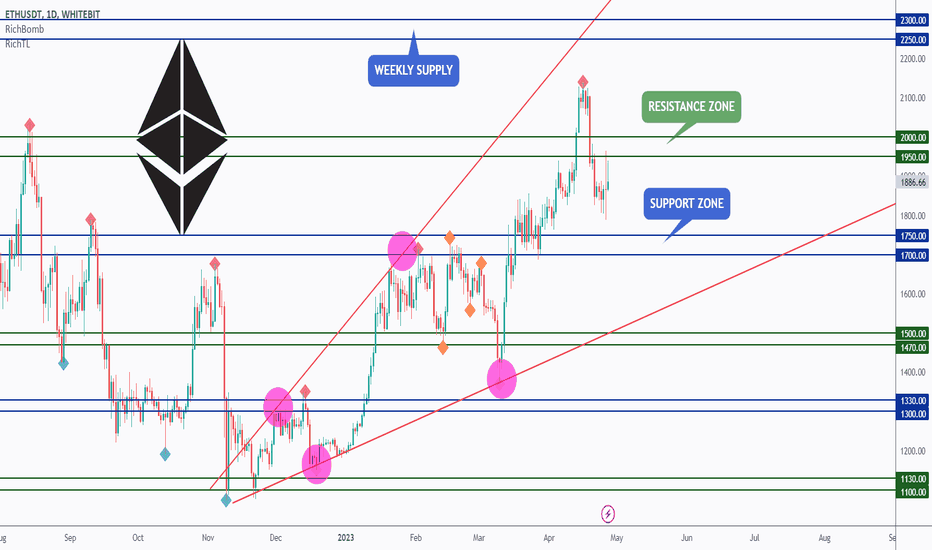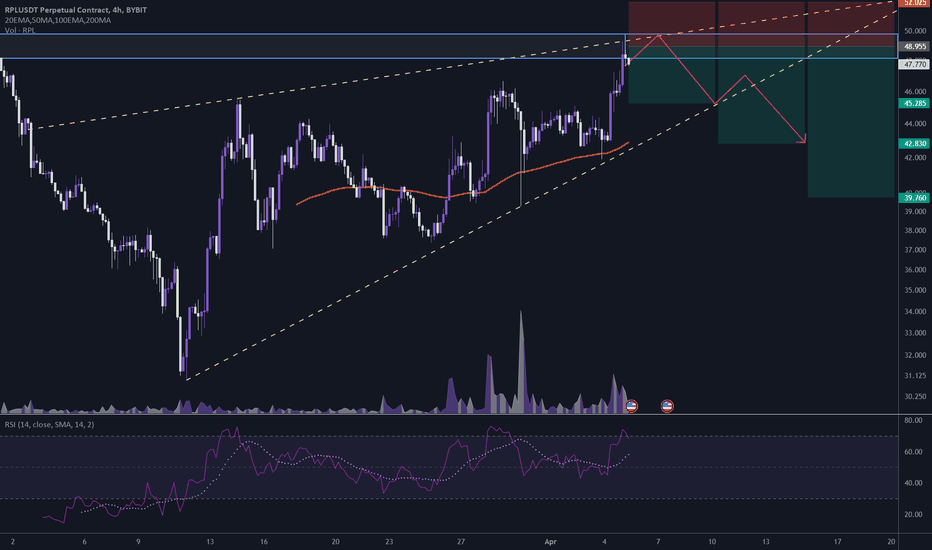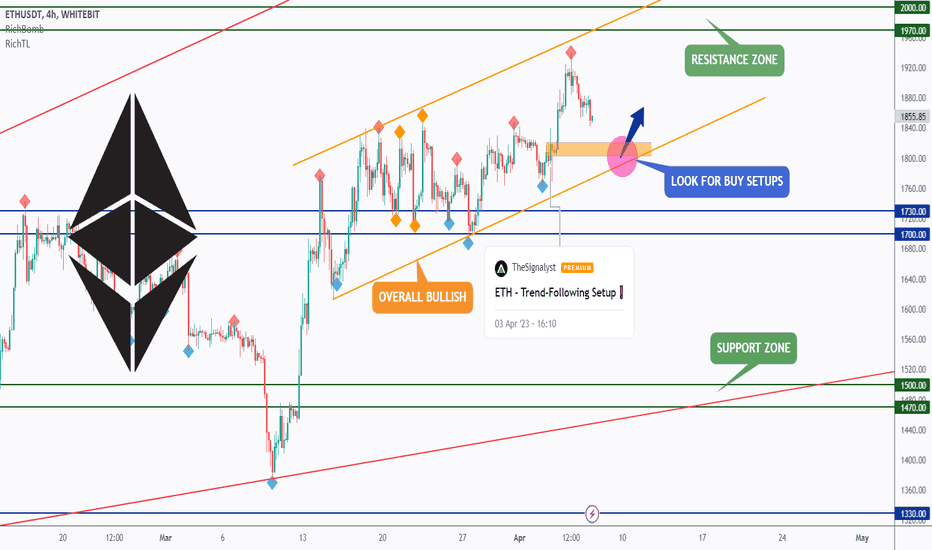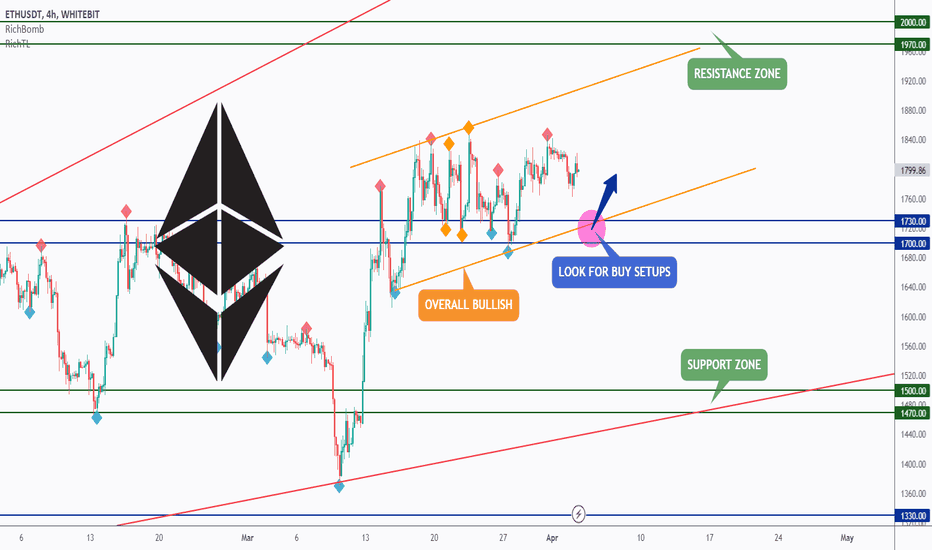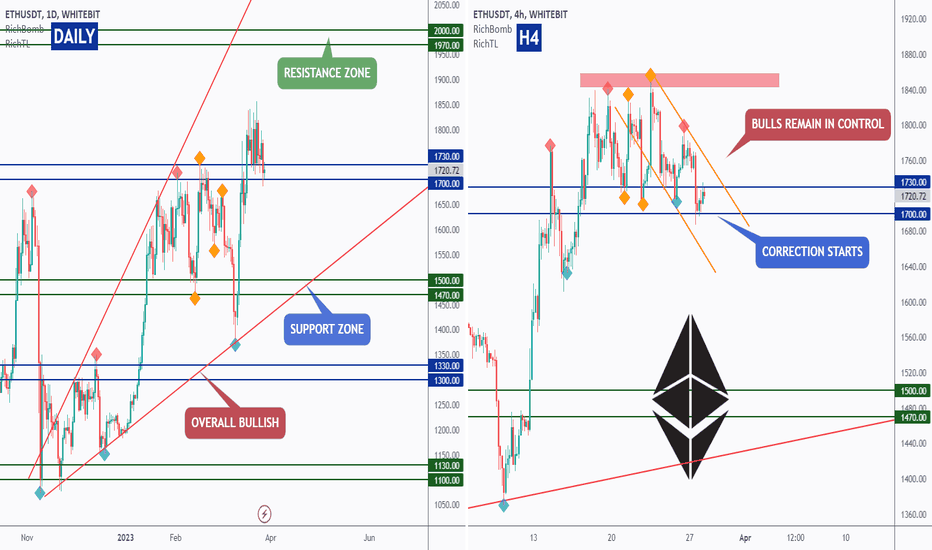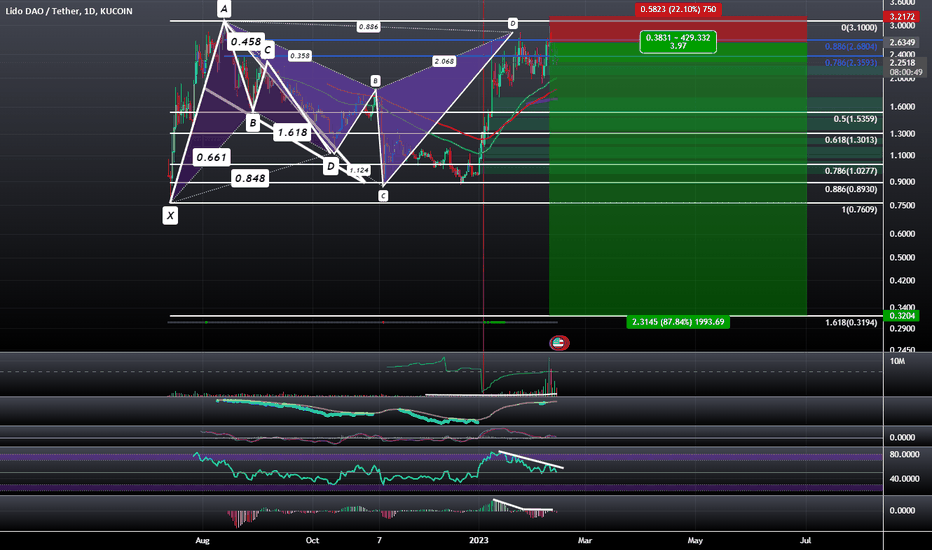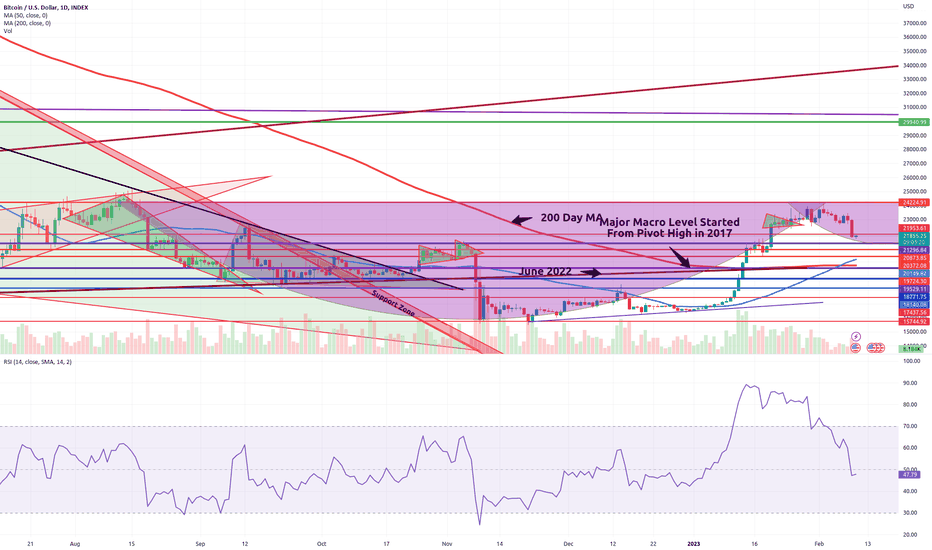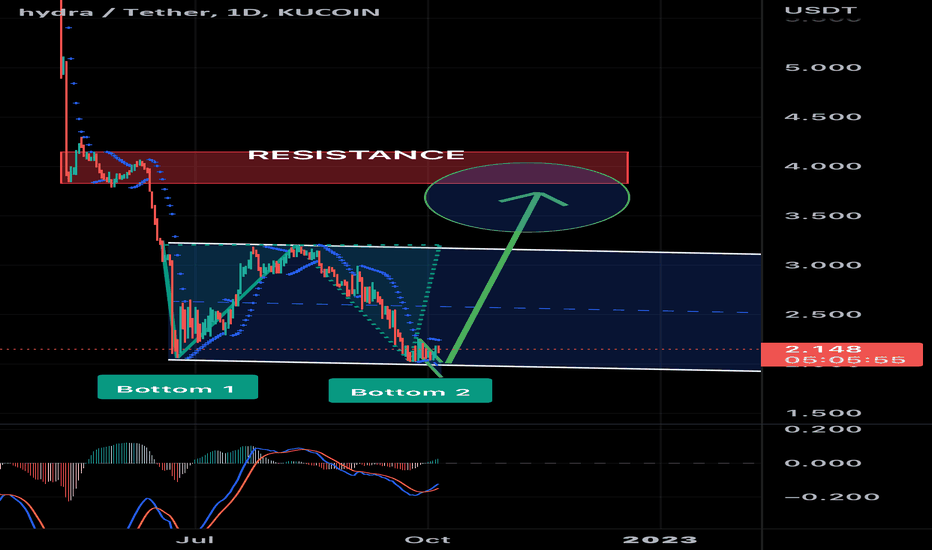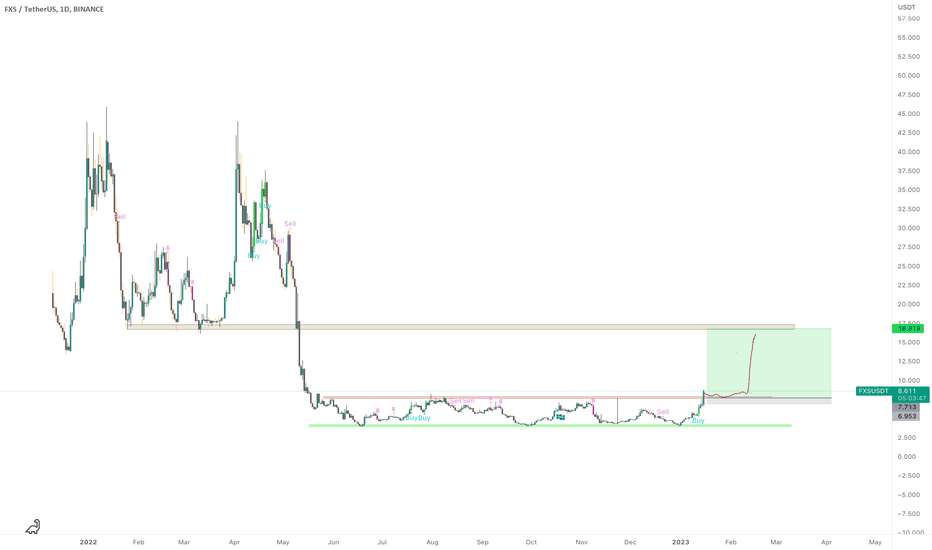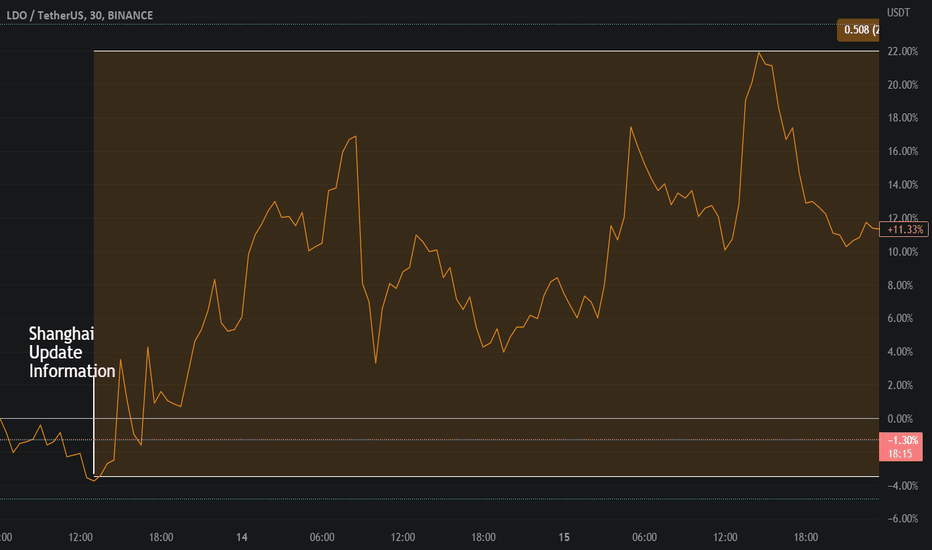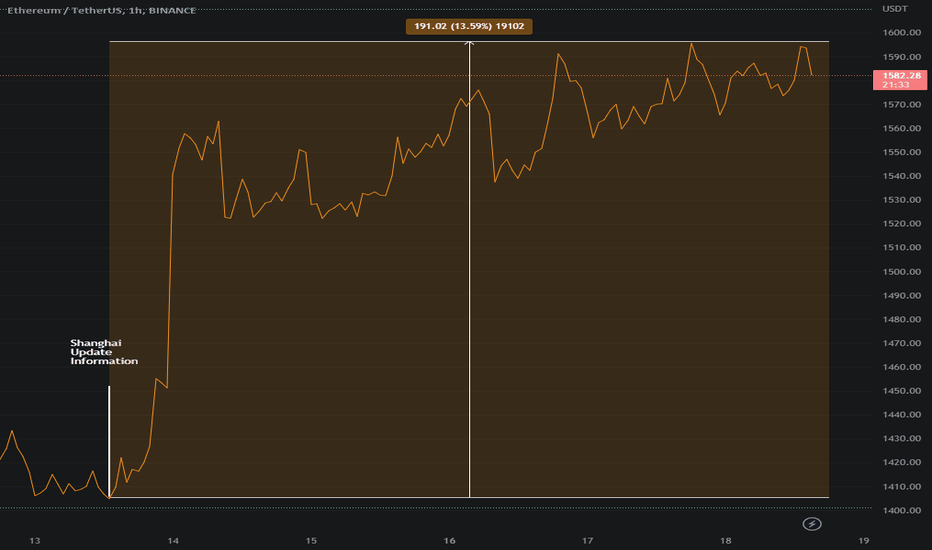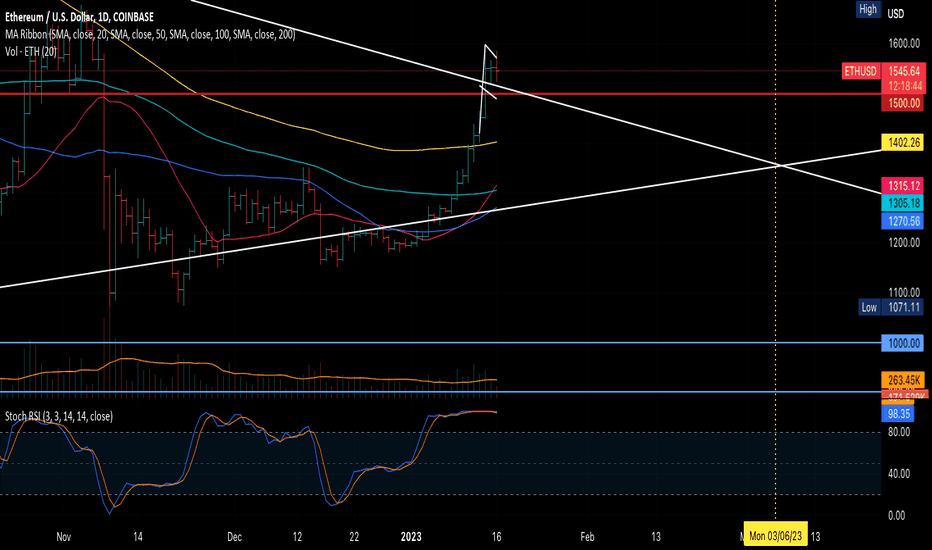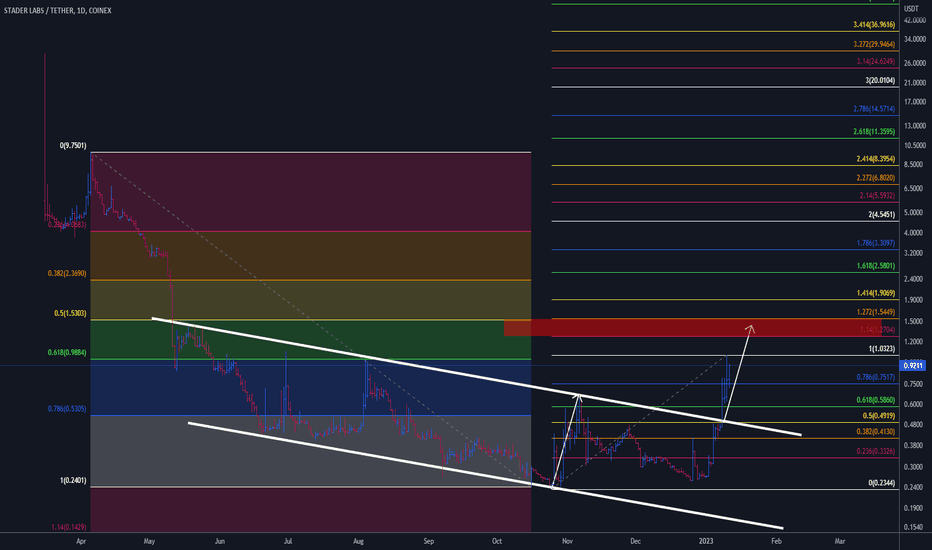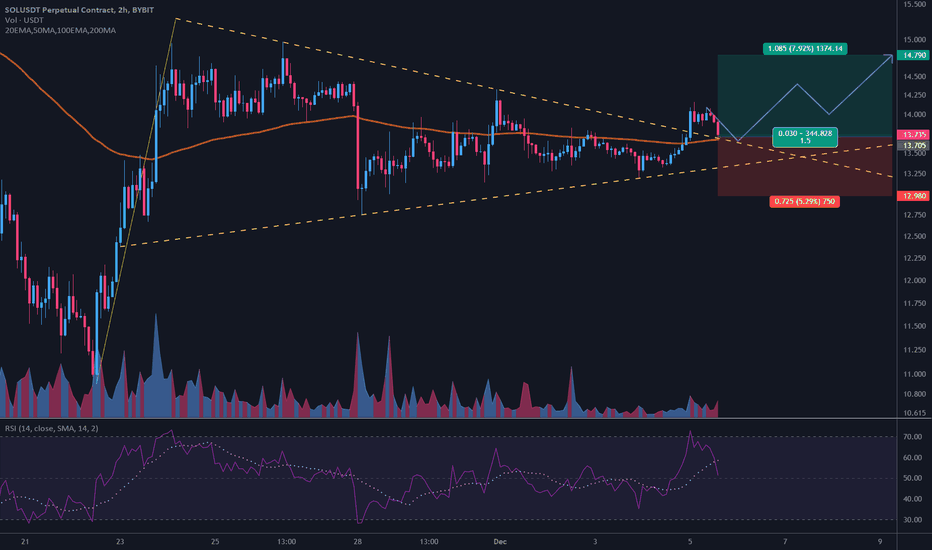Post-upgrade review: what’s next for Ethereum?Ethereum’s network keeps evolving
When the ethereum network enabled withdrawal of staked Ether (ETH) and related rewards on 12 April 2023, several upgrades were made into the blockchain. Many investors wonder why the ‘Shanghai upgrade’ was rebranded as ‘Shapella upgrade’. This was due to the fact that software upgrades were made both on the execution layer of the blockchain (the Shanghai upgrade) and on the consensus layer of the blockchain (Capella upgrade). The execution layer is an environment where applications and smart contracts reside and where transactions within and between applications are processed. The consensus layer, on the other hand, is a place where the network rules are enforced. This layer became active with the introduction of Proof-of-Stake (PoS) consensus mechanism. The combination of these upgrades is called ‘Shapella’. It is typical for the Ethereum network that it keeps evolving and improving. In fact, Ethereum’s inventor, Vitalik Buterin, has stated that after the completion of the Merge, the network is only 50% complete.
Staking yield varies
On 30 May 2023, Ethereum’s annual staking yield was estimated at 5.6%1. The estimated yield varies depending on the amount of validators, the amount of transactions, whether maximum extractable value (MEV) technology is used, and how ETH is staked: via solo home staking, staking-as-a-service, via liquid staking pools or via centralised exchanges. The number of validators has increased to a total of almost 593,000 validators2. One could assume that when the validator number increases, the annual percentage yield (APY) might go down, but transaction fees and MEV technology, on the other hand, might increase the yield. MEV is about prioritising the transactions and outsourcing the block production to third parties to maximise the yield. As more use cases are being developed, and more ETH is being used, the transaction portion of the yield might increase.
Number of validators keeps increasing, making the network more secure
The more validators there are the more secure the network is, although there comes a point when additional validators no longer add value in terms of security but add to the cost of securing the network. In fact, Ethereum developers are planning to cap the number of validators to make sure they do not overpay for economic security and to have plenty of new ETH for staking and for collateral purposes behind decentralised stablecoins. It also appears necessary to restrict the growth of validators as some future upgrades on Ethereum, such as single slot finality, require every validator to respond in seconds. To have a million validators might make this process technically challenging3.
The largest individual new validators since the unstaking event come from liquid staking providers Lido Finance (19%) and Rocketpool (4%) and centralised exchange provider Coinbase (7%). Over 50% of new validators are unidentified4.
Validators wanting a full exit has dropped significantly
After withdrawal of staked ETH and related rewards were allowed, the Ethereum network limited the number of full validator exits to maintain the stability and security of the network. The number of full exits was limited to seven validators per epoch, which is 6.4 minutes, meaning that a maximum of 1,575 validators could exit the network per day5.
Although there was an initial flurry of exits, on 30 May 2023, just 53,028 ETH or approximately $101 million of ETH was waiting for a full exit. This number is down 6x from early May when over 350,681 ETH was waiting for a full exit from the network. The number of validators that have exited fully so far is approximately 10% and, at the moment, the number of validators waiting for a full exit is just 1,642, down from 10,920 validators in early May6. A big part of exited validators come from Kraken, and was expected, as Kraken has settled a lawsuit with the Securities and Exchange Commission in the US and promised to stop offering its staking-as-a-service product to US customers. Other large exits have come from Binance, Coinbase, and Huobi7. It also looks as though 50% of ETH waiting for withdrawal has come from Kraken8.
The feared downside price pressure on ETH did not materialise and, in fact, the price of ETH has not changed much since unstaking. The price is flat since 12 April 2023, although the price has varied somewhat during this time period. ETH, however, has had a meaningful run since the beginning of 2023, and is up by more than 50% this year9.
Increasing amount of staked ETH shows the attraction of staking yield for investors
Since the Merge in September of last year, the amount of ETH staked has increased by 60% to a total of over 21.6 million from 13.5 million of ETH staked last September. This number includes the ETH rewards10 and is close to 16% of the total ETH in circulation. The number of validators has increased as well by 40% since the Merge last September to 593,000 from 420,000. We expect the staking ratio to increase further and to at least double in the next year or so. Increased amount of staking activity and the increasing number of validators are positive signs for the Ethereum network and show that staking yield is part of the attraction for investing in Ethereum.
Slow transaction processing and high costs remain to be resolved
The Shapella upgrade does not solve the problem of network congestion or high gas/transaction fees, which became a problem during the last bull market of 2021-2022. Several other layer 1 networks, such as Solana, were actively developed and promoted during this time, because Ethereum’s gas fees rose to exceedingly high levels during high demand periods. For the moment, the network’s ability to handle transactions remains limited to 15-30 transactions per second.
Up until recently, to address the capacity limitation problem, the Ethereum developers have talked about implementing sharding later this year. Sharding is a term whereby the network is split into smaller ‘shards’ to increase capacity. What seems to have taken precedence recently, instead, is to work together with layer 2 networks and to increase the Ethereum’s network capacity via Proto-Danksharding.
Short-term scalability is expected to be achieved via Proto-Danksharding
Proto-Danksharding is a way to address the scalability problem on the Ethereum blockchain. It uses layer 2 rollups (optimistic rollups, zero-knowledge rollups) to move transactions off-chain, bundle them up, and verify them back as a single transaction on the Ethereum’s layer 1 blockchain. If there is a problem with a transaction, this transaction can be reconstructured on Ethereum’s layer 1 network. This need to post the transaction data back to the layer 1 network is expensive because data is posted on all Ethereum nodes and is expected to live on the chain forever.
Proto-Danksharding aims to solve this problem by attaching data ‘blobs’ into the network temporarily. Blobs would be large portable bundles that could contain cheap transaction data. These blobs would not be accessible to Ethereum Virtual Machine’s (EVM) environment and would be automatically deleted after a fixed time period. This would enable layer 2 rollups to send transaction data back to layer 1 much more cheaply and pass these savings on to users resulting in cheaper transactions.
Sources
1 Source: Ethereum
2 Source: Ethereum
3 Source: Tim Beiko & Justin Drake, Ethereum Foundation, April 2023.
4 Source: Nansen
5 Source: Ethereum
6 Source: Nansen
7 Source: Rated Network Explorer.
8 Source: Nansen
9 Source: Nansen
10 Source: Nansen
Staking
$MINA/BTC 2D (#Binance) Falling wedge breakout and retestMina Procotol just pulled-back after a morning star which is a bullish reversal pattern.
Also we can see RSI broke-out, road back to 200MA resistance seems likely!
⚡️⚡️ #MINA/BTC ⚡️⚡️
Exchanges: Binance
Signal Type: Regular (Long)
Amount: 6.4%
Current Price:
0.00002637
Entry Targets:
1) 0.00002584
Take-Profit Targets:
1) 0.00003384
Stop Targets:
1) 0.00002183
Published By: @Zblaba
FWB:MINA #MINABTC #MinaProtocol #PoS #Web3 #ZKP
Risk/Reward= 1:2
Expected Profit= +31%
Possible Loss= -15.5%
Estimated Gaintime= 2-3 months
minaprotocol.com
$ADA/USDT 2D (#Bybit) Descending trendline breakout and retestCardano is pulling back to 50MA support and seems to be done with the downtrend, let's prepare for mid-term recovery.
⚡️⚡️ #ADA/USDT ⚡️⚡️
Exchanges: ByBit USDT, Binance Futures
Signal Type: Regular (Long)
Leverage: Isolated (2.0X)
Amount: 4.6%
Current Price:
0.4051
Entry Zone:
0.4014 - 0.3618
Take-Profit Targets:
1) 0.4798
2) 0.5536
3) 0.6275
Stop Targets:
1) 0.2995
Published By: @Zblaba
CRYPTOCAP:ADA #ADAUSDT #Cardano #PoS #L1
Risk/Reward= 1:1.2 | 1:2.1 | 1:3.0
Expected Profit= +51.5% | +90.1% | +128.9%
Possible Loss= -43.0%
Estimated Gaintime= 3-4 months
cardano.org
ETH - Critical Resistance Ahead 🗝Hello TradingView Family / Fellow Traders. This is Richard, also known as theSignalyst.
ETH has been slight bullish for the last couple of weeks trading inside the orange flat rising broadening wedge pattern.
📈 Lately, ETH rejected the upper bound of the wedge pattern and now retesting it again.
For the bulls to take over again medium-term , we need a break above the red resistance.
📉 Meanwhile , If / As ETH approaches the lower bound of the wedge pattern and blue support, we will be looking for buy setups.
Which scenario is more likely to happen next? and why?
📚 Always follow your trading plan regarding entry, risk management, and trade management.
Good luck!
All Strategies Are Good; If Managed Properly!
~Rich
$GMX/USDT 12h (#Bybit) Rising wedge breakdown and retestGMX (f.k.a. Gambit) lost 100EMA support and got rejected after pulling back to it, bearish continuation would make sense.
⚡️⚡️ #GMX/USDT ⚡️⚡️
Exchanges: Binance Futures, ByBit USDT
Signal Type: Regular (Short)
Leverage: Isolated (4.2X)
Amount: 5.0%
Current Price:
72.890
Entry Zone:
74.345 - 77.445
Take-Profit Targets:
1) 67.335
2) 60.890
3) 54.450
Stop Targets:
1) 83.055
Published By: @Zblaba
TSX:GMX #GMXUSDT #Gambit #Derivatives #DEx
gmx.io
$TWT/USDT 12h (#Bybit) Descending trendline breakout and retestTrust Wallet Token regained 50MA support, seems to be done with the downtrend and ready for recovery towards 200MA.
⚡️⚡️ #TWT/USDT ⚡️⚡️
Exchanges: ByBit USDT
Signal Type: Regular (Long)
Leverage: Isolated (4x)
Amount: 5.0%
Current Price:
1.2160
Entry Targets:
1) 1.2030
Take-Profit Targets:
1) 1.3845
Stop Targets:
1) 1.0820
Published By: @Zblaba
$TWT #TWTUSDT #TrustWalletToken
Risk/Reward= 1:1.5
Expected Profit= +60.3%
Possible Loss= -40.2%
$STMX/USDT 1D (#Bybit) Ascending wedge breakdown and retestStormX got rejected on 200EMA resistance then printed an evening star, bearish continuation is in play after a pull-back to 200MA.
⚡️⚡️ #STMX/USDT ⚡️⚡️
Exchanges: ByBit USDT
Signal Type: Regular (Short)
Leverage: Isolated (2.7X)
Amount: 4.9%
Current Price:
0.005235
Entry Targets:
1) 0.005575
Take-Profit Targets:
1) 0.004305
Stop Targets:
1) 0.006420
Published By: @Zblaba
$STMX #STMXUSDT #StormX #DeFi
Risk/Reward= 1:1.5
Expected Profit= +61.5%
Possible Loss= -40.9%
stormx.io
$WOO/USDT 12h (#Bybit) Ascending triangle breakout and retestWoo Network is pulling back to 100EMA support where a small bounce would make sense.
⚡️⚡️ #WOO/USDT ⚡️⚡️
Exchanges: ByBit USDT
Signal Type: Regular (Long)
Leverage: Isolated (2.3X)
Amount: 5.0%
Current Price:
0.2403
Entry Targets:
1) 0.2375
Take-Profit Targets:
1) 0.2998
Stop Targets:
1) 0.1959
Published By: @Zblaba
FWB:WOO #WOOUSDT #WooNetwork #CeFi
Risk/Reward= 1:1.5
Expected Profit= +60.3%
Possible Loss= -40.3%
Estimated Gaintime= 2-3 weeks
woo.org
ETH - All Eyes on 2000 & 1750 👀Hello TradingView Family / Fellow Traders. This is Richard, also known as theSignalyst.
From a long-term perspective, ETH has been overall bullish trading inside the rising broadening wedge pattern just like BTC.
Lately, from a medium-term perspective, ETH got stuck inside 1750 support and 2000 resistance.
As per my trading style, here is my plan:
📉 1- Wait for ETH to approach the 1750 support to look buy setups
📈 2- Wait for ETH to break above 2000 (daily candle) then look for buy setups on its retest
📌 Meanwhile, as long as ETH is sitting midway it would be a no trade zone for me. So I will be waiting patiently!
Remember: Sometimes No Trade, is also a Trade.
Which scenario do you think is more likely to happen first? and why?
📚 Always follow your trading plan regarding entry, risk management, and trade management.
Good luck!
All Strategies Are Good; If Managed Properly!
~Rich
$RPL/USDT 4h (#Bybit) Ascending wedge on resistanceRocket Pool looks overbought on Low TF and seems likely to get rejected on local top then retrace down to 100EMA support.
⚡️⚡️ #RPL/USDT ⚡️⚡️
Exchanges: ByBit USDT
Signal Type: Regular (Short)
Leverage: Isolated (6.4X)
Amount: 5.0%
Current Price:
47.770
Entry Zone:
48.150 - 49.760
Take-Profit Targets:
1) 45.285
2) 42.830
3) 39.760
Stop Targets:
1) 52.025
Published By: @Zblaba
$RPL #RPLUSDT #RocketPool #LP #DeFi #Eth2
Risk/Reward= 1:1.2 | 1:2.0 | 1:3.0
Expected Profit= +48.0% | +80.1% | +120.2%
Possible Loss= -40.1%
Estimated Gaintime= 2 weeks
rocketpool.net
ETH - Trend-Following Setup; Again ❗️ Hello TradingView Family / Fellow Traders. This is Richard, also known as theSignalyst.
As per my last analysis (attached on the chart), we were looking for trend-following buy setups.
Now ETH is retesting the lower trendline again , so we will be following the same logic.
ETH has been stuck inside a range in the shape of a rising channel in orange .
Moreover, the 1800 is a minor demand zone lining up with the previous major highs.
🏹 So the highlighted purple circle is a strong area to look for buy setups as it is the intersection of the orange demand and lower orange trendline. (acting as non-horizontal support)
As per my trading style:
As ETH approaches the purple circle zone, I will be looking for bullish reversal setups (like a double bottom pattern, trendline break , and so on...)
We will remain bullish , UNLESS ETH breaks below the lower orange trendline.
📚 Always follow your trading plan regarding entry, risk management, and trade management.
Good luck!
All Strategies Are Good; If Managed Properly!
~Rich
ETH - Trend-Following Setup ❗️Hello TradingView Family / Fellow Traders. This is Richard, also known as theSignalyst.
After breaking above 1700, ETH has been stuck inside a range in the shape of a rising channel in orange.
Moreover, the 1700 is currently acting as a strong support zone.
🏹 So the highlighted purple circle is a strong area to look for buy setups as it is the intersection of the blue support and lower orange trendline. (acting as non-horizontal support)
As per my trading style:
As ETH approaches the purple circle zone, I will be looking for bullish reversal setups (like a double bottom pattern, trendline break , and so on...)
We will remain bullish, UNLESS ETH breaks below 1700, in this case a deeper correction till around 1550 would be expected.
📚 Always follow your trading plan regarding entry, risk management, and trade management.
Good luck!
All Strategies Are Good; If Managed Properly!
~Rich
ETH - All Eyes on 1700 👀Hello TradingView Family / Fellow Traders. This is Richard, also known as theSignalyst.
📌 on Daily: Left Chart
ETH is currently bullish trading inside the red rising broadening wedge pattern; and the next main resistance would be around 2000 and/or upper red trendline.
📉 Hence, as ETH approaches the 2000 zone, we will be expecting the bears to take over for a medium-term correction.
📌 on H4: Right Chart
For now, we will remain bullish as long as ETH doesn't break a previous major low.
The current last major low is around 1700
📉 If we break below 1700 expect a bearish correction to start till around 1500 - 1550 support / demand.
Which scenario do you think is more likely to happen first? and why?
📚 Always follow your trading plan regarding entry, risk management, and trade management.
Good luck!
All Strategies Are Good; If Managed Properly!
~Rich
LDOUSD Bearish Shark: Likely to Crash Down With EthereumLDO is at the PCZ of a Bearish Shark at the sametime ETH is at the PCZ of Bearish Bat and Both a reacting negatively to the PCZ and showing Bearish Divergence, ETH is also the most bearish looking coin on the market as can be seen in the related Ideas tab below. I think that ETH and LDO will be losing most of their value very soon while the rest of the non DeFi Centralized coins like BTC and Doge, and LTC will only take a minor hit by comparison.
Here's What I see for Bitcoin and CryptoTraders/Investors,
Everything is playing out as expected. This is good news, however, we must always proceed carefully, cautiously, and with good trade strategy. Previously, I indicated what indicators we are waiting for to enter/re-enter this latest bull move. Those indicators have occurred. Now, we must look at what could be next.
Stew
DOUBLE BOTTOM PATTERN FORMINGDouble Bottom Pattern is Signaling a Buy on Hydra!
The Double Bottom is also called the BIG WINNER, because it forms a W on the chart.
I expect HYDRA CHAIN (on the 1 Day Chart), to continue bullish until we reach top of the parallel channel before breaking out to resistance at $3.60+.
One Key Target area to watch as we approach the neckline & top of parallel channel @ $3.20, we must close candle above $3.20 to signal a breakout.
When this happens, we will surely have a retest of $3.60 before continuing with higher highs.
FUN FACT:
HYDRA also has a 40% Staking Incentive that is hard to pass up that will compound daily when you reinvest your staking rewards. That is 0.1% in Hydra/day & Compounded Daily. As a traded security, you have the amazing potential of having those percentages exponentially increased.
KEY TAKEAWAYS:
>The double bottom looks like the letter "W". The twice-touched low is considered a support level.
>The double bottom pattern always follows a major or minor downtrend in a particular security, and signals the reversal and the beginning of a potential uptrend.
Remember to DYOR and Happy Trading!
Liquid staking: Any prospects with $LDO?This is a continuation of our previous idea :
In the first part, we dissected native staking, the current situation, and made a firm prediction about what Ethereum will face next. In this article, we will define liquid staking, examine current data and the most important liquid staking protocol, Lido, and forecast what's next for the $LDO native token.
What is liquid staking?
Liquid staking is a method of staking in which the user receives derivative tokens from the provider protocol, such as stETH from the Lido protocol, which can be used to generate additional revenue through DeFi protocols or converted to any other token via CEX or DEX.
What is $LDO?
Today, there are 9 most popular liquid staking protocols that account for ~40% of the total market. Lido is the most popular protocol (~28.9% of total staking volume and 87.5% of liquid staking volume).
LDO is a governance token. It does not entitle holders to a share of the generated yield or commissions. The token also has additional inflation. Lido constantly cooperates with different projects and provides incentive awards for pools with its tokens. 2-3 million LDO per month. But the number of allocated rewards is gradually decreasing.
Smart-money in $LDO
We should also mention the smart money that invested in $LDO tokens in the early stages. In short, all of the major funds that invested in $LDO are still holding their tokens, and many have not sold them at all. Paradigm, for example, increased the capitalization of its investment from $50 million to $130 million.
The only exceptions were Alameda Research and 3AC, which had serious issues in 2022 and required funds for liquidity and closing payment gaps.
WHAT SHOULD WE DO WITH LDO?
The capitalization of all liquid-staking protocols will increase because their product offer alleviates users' pains and makes them more agile. LDO is the locomotive of this trend; compare it to Ethereum in the Layer 1 segment. While LDO may appear to some to be outdated, there are protocols that provide better and more flexible terms to their users. However, betting on the growth of LDO is betting on the growth of the entire segment. If you want to make a lot of money, you should look for protocols that are less well-known by the general public.
Smart money believes in LDOs, but you must understand that their margin of safety is greater than that of a single trader. Always assume that your investments will be long-term.
Users trust Lido because their ecosystem has been tested in the market, their derivative token stETH has been attacked by other market participants, and the Lido team knows how to deal with it.
To summarize, a long in LDO is a bet that the liquid staking protocol segment will expand further, and you choose the market-tested protocol among others.
By the way, you can trade $LDO with us. Check the signature. Write your comments abut LDO and don't forget about risk management!
Staking and the Shanghai upgrade: What expect from Ethereum?Staking has become the primary way to earn profitability for validation and network support since Ethereum switched to a Proof-of-Stake consensus mechanism. The Shanghai update, which will allow users to withdraw their staked ETH, is scheduled to be released in March 2023.
In this idea, we will look at the current state of staking and what to expect in the nearest future.
The main disadvantages of native staking are as follows:
While your Ethereum is staked, you must keep it locked up and cannot use it for anything else;
Staking is inefficient in terms of capital usage because the staking fee is only calculated on 32 locked ETH. This means that if you stake 32 ETH and grow it up to 34 ETH with rewards, the rewards will only be applied to the original 32 ETH. This renders a portion of your capital ineffective;
You cannot withdraw your ETH until the Shanghai update is released.
To address these concerns, liquid staking protocols have emerged on the market. We will go over these in details below.
According to PnL Staker Data, 66.5% of stakers are currently losing money because the price of ETH when they staked it was higher than the current price. The highest peak of staking for users at a loss occurred in the $2500-$3500 price range. Given the minimum staking size of 32 ETH, these users have suffered significant losses, and many may choose to withdraw their ineffective staked ETH to minimize or avoid these losses.
There are currently 500,000 active validators working on Ethereum, and the total staked balance is 16 million ETH (13% of the total supply of ETH), with one validator's average balance being around 34 ETH.
Some key takeaways from this information are:
Currently, there are about 1 million inefficient ETHs worth approximately $1.5 billion;
The average daily trading volume of ETH is around $6-7 billion;
The ineffective volume of ETH will take 8-10 days to withdraw. Each epoch lasts 6.4 minutes, has 256 withdrawal transactions, and we have 225 epochs per day.
So, what can we expect from Ethereum in the future? Based on current market conditions, the Federal Reserve's softer rhetoric, positive CPI data, and a negative news agenda leading up to March 2023 (when the final damages from the FTX collapse will be assessed and Mt. Gox users will receive their payments), Ethereum, like the rest of the market, is likely to experience local growth until March.
However, we are likely to see a market decline around March 10-20, which will be influenced by the Shanghai update. The 8-10 days required to restore capital efficiency for Ethereum stakeholders will put downward pressure on the price.
If the overall market is positive and investors are willing to buy, we can anticipate further growth following this period of decline. On the other hand, if the market is more negative and traders are driven by greed, we may see cascading liquidations and a new fall in the market.
Write in a comment section your opinion whether it will be a further growth or a new fall in the market and also share with us please your thoughts about our ideas. We are a fast-growing derivative exchange and we would like to share our ideas and provide society with a high-quality information to read and to talk about. So that's why we need feedback from you. Check our previous ideas and thanks for your time!
$SOL/USDT 2h (#Bybit) Bull-pennant breakout & retestSolana is pulling back to 100EMA support where a bounce would make sense, short-term.
⚡️⚡️ #SOL/USDT ⚡️⚡️
Exchanges: ByBit USDT
Signal Type: Regular (Long)
Leverage: Isolated (5.0X)
Amount: 7.5%
Current Price:
13.735
Entry Targets:
1) 13.705
Take-Profit Targets:
1) 14.790
Stop Targets:
1) 12.980
Published By: @Zblaba
Risk/Reward= 1:1.5
Expected Profit= +39.58%
Possible Loss= -26.45%
